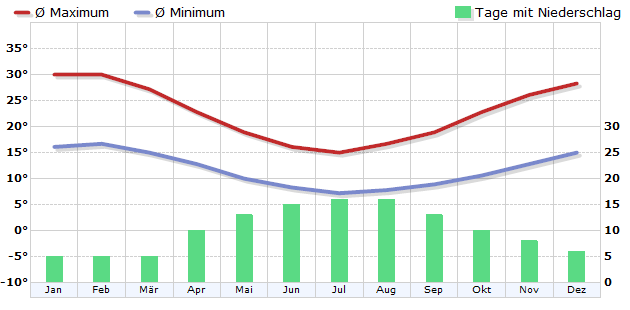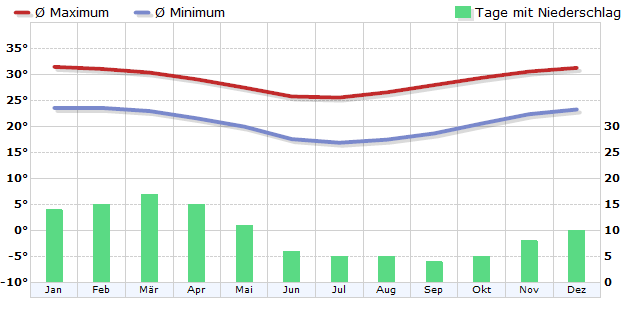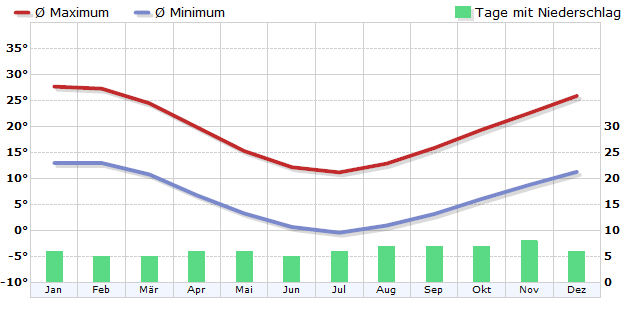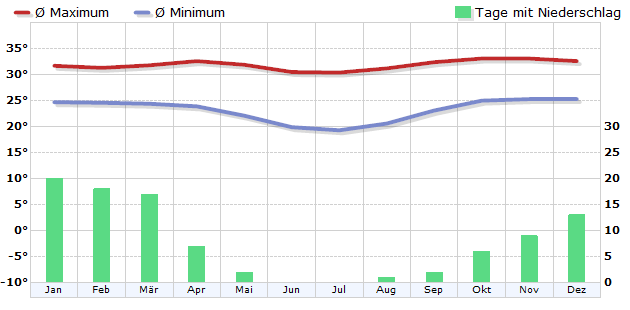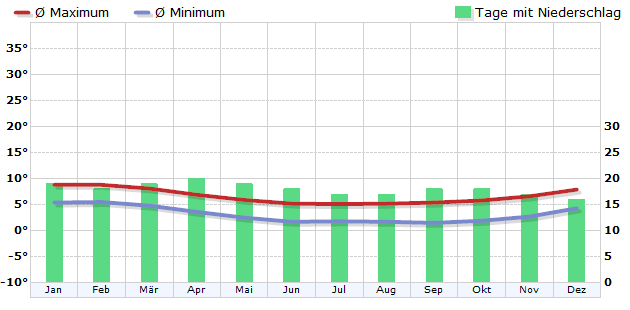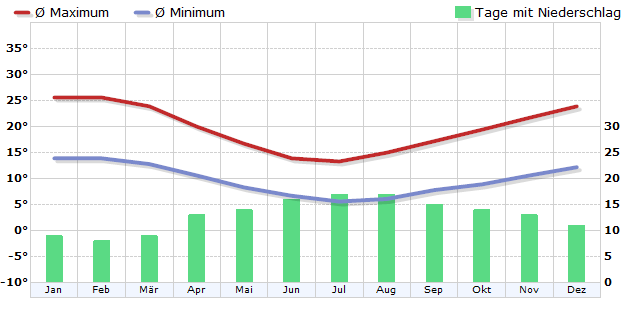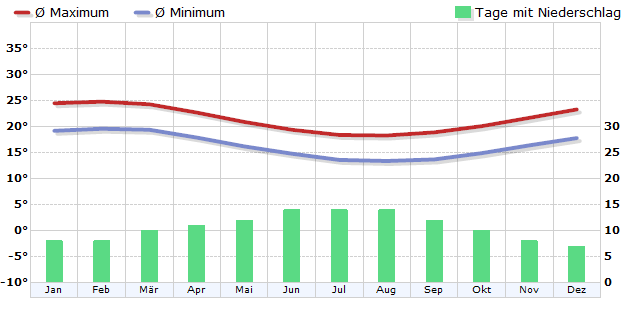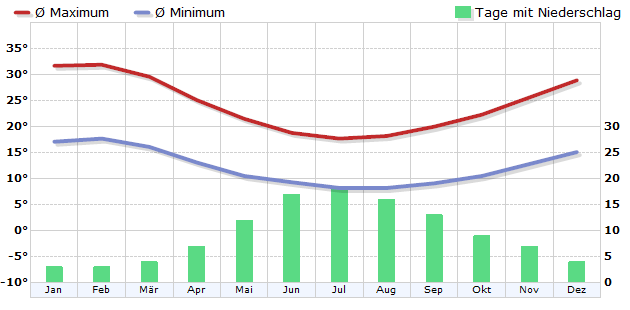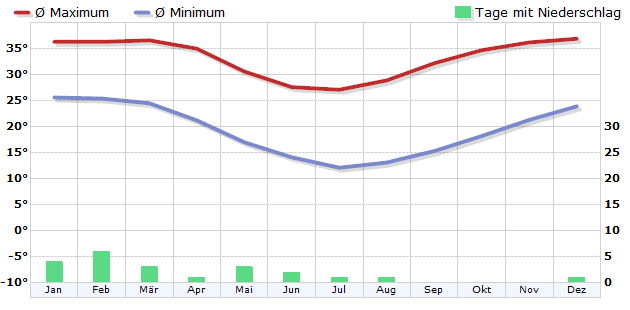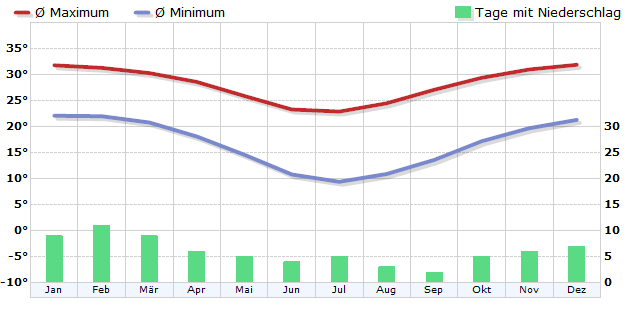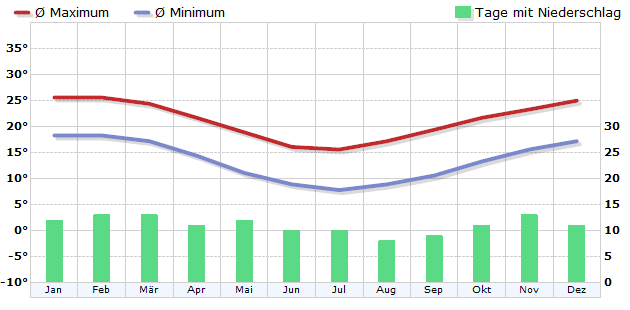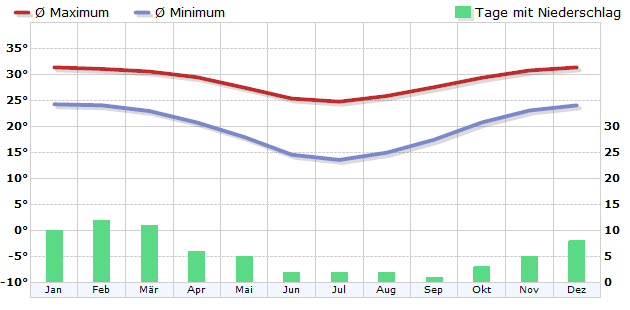Climate Australia

Australia can be divided into four different climate zones: the tropical north, the subtropical south, the dry centre and the temperate climate of Tasmania. In the north, average highs reach 32 degrees in summer and 23 degrees in winter. In the summer months large amounts of precipitation fall to 1500 mm, in the winter (June to August) it remains predominantly dry. In the south of Australia, between 600 and 700 mm of rain fall in winter, in the southeast the precipitation is mostly spread over the whole year. The average temperatures are lowest in July (12 to 13 degrees Celsius) and highest in January and February (22 degrees Celsius). In the dry centre, rain rarely falls with a maximum annual precipitation of 250 mm. In some regions of the outback it can get very hot with maximum temperatures up to 50 degrees, but at night it can also get cold, so that day temperature fluctuations can be up to 40 degrees. Sometimes rain does not fall there for months. Southeast of the main land mass of Australia lies the offshore island Tasmania. There prevails moderate oceanic climate. In summer the average maximum values are between 20 and 22 degrees, in winter between 11 and 13 degrees. The precipitation falls quite evenly over the whole year and adds up to 400 to 3800 mm per year. The reason for the region's enormous amount of precipitation is the so-called "roaring fourties", strong and humid winds that blow from the west and cause heavy precipitation. The annual precipitation in Tasmania decreases from west to east.
Due to the enormous size of the country and the regionally very different climatic conditions no all-inclusive travel time can be recommended. In the north and the outback you should avoid the hot summer months between November and February. For city trips to the south and hikes in the bush, the months of March, April, September and October are ideal.
Destinations
- Adelaide
- Alice Springs, Northern Territory
- Cairns, Queensland
- Canberra
- Darwin, Northern Territory
- Esperance, Western Australia
- Kalgoorlie, Western Australia
- Mackay, Queensland
- Macquarie Island, South Pacific
- Melbourne
- Norfolk Island, South Pacific
- Perth
- Port Hedland, Western Australia
- Rockhampton, Queensland
- Sydney
- Townsville, Queensland

